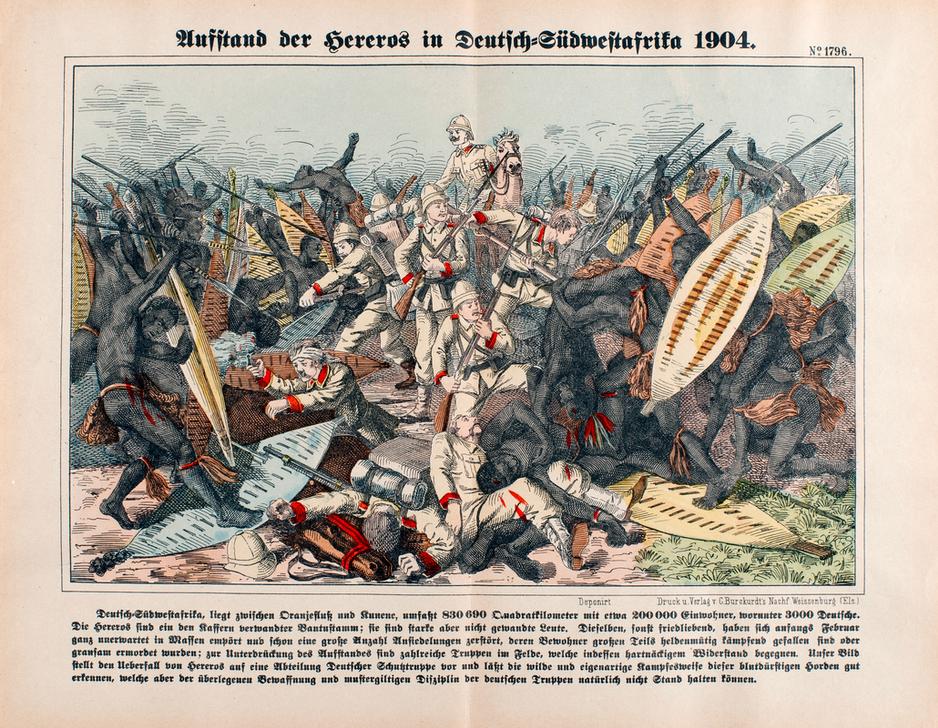Herero Uprising in German South-West Africa (1904)
Abstract
This contemporary lithograph provides an example of German propaganda during the suppression of the Herero uprising in 1904. The caption reads: “German Southwest Africa, located between the Orange River and the Kunene River, covers 830,690 square kilometers with about 200,000 inhabitants, including 3,000 Germans. The Hereros are a Bantu tribe related to the Kaffirs; they are strong but not agile people. The Hereros, otherwise peace-loving, rose up in arms at the beginning of February and have already destroyed a large number of settlements, most of whose inhabitants died fighting heroically or were cruelly murdered; numerous troops are in the field to suppress the uprising, but they are meeting stubborn resistance. Our picture depicts the attack of Hereros on a detachment of German troops and shows the wild and peculiar way of fighting of these bloodthirsty hordes, which of course cannot withstand the superior armament and exemplary discipline of the German troops.”
The Herero were numerically the largest ethnic group in the colony of German Southwest Africa (present-day Namibia). They traditionally lived from cattle breeding and saw their livelihood threatened by the German colonial policy of exclusion and territorial displacement. In 1904, the conflicts escalated into the Herero War, which was ruthlessly waged as a war of extermination by German troops under Lothar von Trotha and cost the lives of tens of thousands of Herero (including women and children). After a long public debate, the German government today acknowledges that the warfare against the Herero constituted genocide.
Source

Source: Original: C. Burckardt's Nachf., Weissenburg (Nr. 1796).
© AKG Images